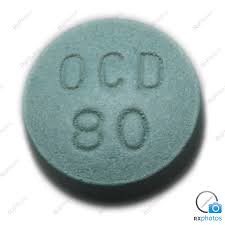OxyContin’s Reformulation Linked to Rising Suicides by Children

In 2010, Purdue Pharma replaced the original version of OxyContin, an extended-release oxycodone pill, with a reformulated product that was much harder to crush for snorting or injection. The idea was to deter nonmedical use, and the hope was that the reformulation would reduce addiction and opioid-related deaths. That is not how things worked out.
The reformulation of OxyContin was instead associated with an increase in deaths involving illicit opioids and, ultimately, an overall increase in fatal drug overdoses. Researchers identified that pattern by looking at the relationship between pre-2010 rates of OxyContin misuse, as measured by surveys, and subsequent overdose trends. They found that death rates rose fastest in states where reformulation would have had the biggest impact. A new study by RAND Corporation senior economist David Powell extends those findings by showing that the reformulation of OxyContin also was associated with rising suicides among children and teenagers.
The root cause of such perverse effects was the substitution that occurred after the old version of OxyContin was retired. Nonmedical users turned to black-market alternatives that were more dangerous because their potency was highly variable and unpredictablea hazard that was compounded by the emergence of illicit fentanyl as a heroin booster and substitute. The fallout from the reformulation of OxyContin is one example of a broader tendency: Interventions aimed at reducing the harm caused by substance abuse frequently have the opposite effect.
From 1988 to 2010, Powell notes in the journal Demography, the suicide rate among 10-to-17-year-olds fell by 36 percent. That drop was “followed by eight consecutive years of increasesresulting in an 83% increase in child suicide rates.” Based on interstate differences in nonmedical use of OxyContin prior to 2010, Powell estimates that “the reformulation of OxyContin can explain 49% of the rise in child suicides.”
Since “the evidence suggests that children’s illicit opioid use did not increase,” Powell says, it looks like “the illicit opioid crisis engendered higher suicide propensities by increasing suicidal risk factors for children,” such as child neglect and “alter[ed] household living arrangements.” He notes a prior study that found “states more
affected by reformulation experienced faster growth in rates of child physical abuse
and neglect starting in 2011.” And he suggests the suicide rate may also have been boosted by “parental death and incarceration” associated with the shift from legally produced pharmaceuticals to illicit drugs.
“Areas more impacted by the transition to illicit opioids due to higher rates of previous OxyContin misuse showed sharper growth in child suicide rates,” Powell said in a press release. “The results are consistent with the growth in illicit opioid use among the adult population generating worsening conditions for children by increasing rates of child neglect.”
This study is one of several documenting the unintended effects of OxyContin’s reformulation. In a 2021 American Journal of Health Economics article, Powell and University of Southern California economist Rosalie Liccardo Pacula noted that the intervention was immediately followed by an increase in heroin-related deaths, a trend that was especially pronounced in states with relatively high pre-2010 rates of OxyContin misuse. In subsequent years, they found, “reformulation stimulated illicit drug markets to grow and evolve,” ultimately resulting in more fentanyl-related deaths.
“More exposed areas experienced disproportionate increases in fatal overdoses involving synthetic opioids (fentanyl) and nonopioid substances like cocaine, suggesting that these new epidemics are related to the same factors driving the rise in heroin deaths,” Powell and Pacula wrote. “Instead of just short-term substitution from prescription opioid to heroin overdoses, the transition to illicit markets spurred by reformulation led to growth in the overall overdose rate to unprecedented levels.”
The eventual impact of that transition was dramatic. “We estimate that reformulation increased the 2013 overdose rate by 1.7 overdoses per 100,000 people, a 14 percent increase relative to the counterfactual,” Powell and Pacula wrote. ” However, by 2017, our estimates imply that reformulation increased overdose rates by over 11.6 overdoses per 100,000 people, more than a 100 percent increase relative to our counterfactual.”
What about the expectation that reformulating OxyContin would ultimately reduce opioid abuse? “The potential benefits of reformulation include reductions in the propensity of beginning to misuse opioids,” Powell and Pacula noted. “However, there is little empirical evidence that such reductions are having a meaningful impact on overdose rates. The relationship between exposure to reformulation and overdose rates has strengthened over time. In addition, initial substance use treatment admissions are also increasing faster in states more exposed to reformulation, suggesting that initiation rates are still not declining in response.”